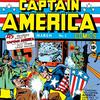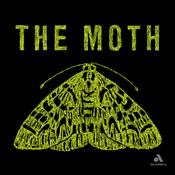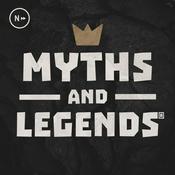29 episodes

Episode 28: Tijuana Bibles
09/11/2025 | 1h 40 mins.
In this episode, I discuss the notorious Tijuana Bibles, the first pornographic comic books. Except that you can't really tell the story of the Tijuana Bibles without also covering several other topics, including the history of celebrity, a celebrity condottiero, Murasaki Shikibu, the first over-merchandised celebrity, Lord Byron fanfic, the history of fandom in the US, firefighting "buffs," Lindmania & Lisztmania, the 8 Most Important Moments in the History of Fanfiction, Judaism as a read/write tradition, the first Real Person Fanfic, the original Mary Sue, the history of Tijuana, why the Puritans were actually pro-sex, the history of pornography, the Marxist interpretation of the popularity of porn during the American Civil War, the actual and true Secret Origins of the Tijuana Bibles, why there were a lot more Tijuana Bibles in circulation than you think, how much Will Eisner could have made if he'd accepted the Mob's invitation, and what the British had instead of Tijuana Bibles. My longest episode, and my best work yet, I think. Enjoy!

Episode 27: African Comics Before WW2
19/10/2025 | 39 mins.
A somewhat scattershot (sorry) chronology of the development of comics and graphic narrative in the colonies and countries of Africa before the beginning of World War Two. In this episode I discuss Paleolithic Algerian rock art, Madagascaran funerary pole sculptures, the King of Cameroon making his own alphabet and the artists who helped him and went on to make proto-comics of their own, caricature and comic art in newspapers in South Africa, the early history of comics in Egypt, the history of comics in Mauritius and the island of Reunion, some surprising developments in Kenya, racist and antisemitic cartoons in South Africa (quelle surprise), the first Cameroonian comic, the Belgian Congo of all places being a relative hotbed of graphic narrative (albeit horribly racist), and Egypt surging ahead of everyone else. Enjoy!

Episode #26: Marvel Comics #1
28/9/2025 | 1h 8 mins.
One of my longer efforts to date, this one is about Marvel Comics #1, the first issue by what would eventually become the juggernaut of American comic book publishing. In this podcast I discuss: just how many Jewish folk were an integral part of Golden Age comics Martin Goodman and his background, the pulps he worked on, and what got him into comics comics packagers and Funnies, Inc. all the moving parts that came together to produce Marvel Comics #1 the historical context in which Marvel Comics #1 appeared the six stories appearing in Marvel Comics #1, and what each one was about what the supposed influences were on Bill Everett when he created the Namor the Sub-Mariner story for Marvel Comics #1, and what were more likely the actual influences on him a bunch of stuff about the various comic book and pulp Ka-Zars a deep dive into the Namor the Sub-Mariner story in Marvel Comics #1--its plot, what it did that was new, and what set Namor apart from virtually every other character in the popular culture of the time and, unfortunately, an element of the Namor stories of the Golden Age that requires a Content Warning to listen to I think this is a pretty good podcast, but I'm not kidding about the content warning--I discuss some pretty dark and potentially triggering stuff. Caveat emptor.

Episode 25: Rin Tin Tin #1
10/8/2025 | 51 mins.
In this episode, which is ostensibly about the Spanish comic Rin-Tin-Tin, I go allll over the place. (Sorry). I begin with the early history of theater among the Egyptians and then the Greeks, discuss their use of animals on-stage, proceed to the Romans (who loved having animals on-stage, my goodness!), briefly describe the use of animals on-stage leading up to vaudeville, then vaudeville, the dime novels with heroic animals, the early silent films with heroic animals (there are several I single out and describe their histories), the stars among the movie animals of the 1920s, the debut of Rin Tin Tin--who didn't save Warner Brothers studio all by himself, despite the Hollywood legend--Rin Tin Tin's popularity around the world, Celebrity Pulps, how and why a Spanish comics publisher decided to make a comic about the real-life adventures of Rin Tin Tin, why it was a runaway success, Rex the Wonder Dog (because of course), ideasplosions, the awesomeness of Jesus de Aragon's Los piratas del aire (1929), various Spanish comics that made adroit use of ideasplosions, the ideasplosions of Rin-Tin-Tin, and the influence of Rin-Tin-Tin on not just other comics but on Spanish science fiction.

Episode 24: Amazing-Man Comics #5
27/7/2025 | 1h 1 mins.
In this episode I use the superhero Amazing Man, who debuted in Amazing-Man Comics #5 (cover date Sept 1939), to take a look at just what, exactly, constitutes a "typical" superhero of the late 1930s and early 1940s. I conclude that Amazing Man is actually the archetypal 1930s superhero and is both symbolically and semiotically important. I discuss the history of Centaur Comics, the debut of Amazing Man, his success, what happened to him after Centaur went out of business in 1942, who Amazing Man was, what he could do, who his archenemy was, the variety of 1930s elements which Amazing Man embodies, the various phases or periods of superhero comics before America entered WW2, and a lot data-based conclusions, accompanied by long lists of various things. (If you like data you'll love this episode).
More Arts podcasts
Trending Arts podcasts
About The History of Comics in 500 Issues
Listen to The History of Comics in 500 Issues, Dish and many other podcasts from around the world with the radio.net app

Get the free radio.net app
- Stations and podcasts to bookmark
- Stream via Wi-Fi or Bluetooth
- Supports Carplay & Android Auto
- Many other app features
Get the free radio.net app
- Stations and podcasts to bookmark
- Stream via Wi-Fi or Bluetooth
- Supports Carplay & Android Auto
- Many other app features


The History of Comics in 500 Issues
download the app,
start listening.































